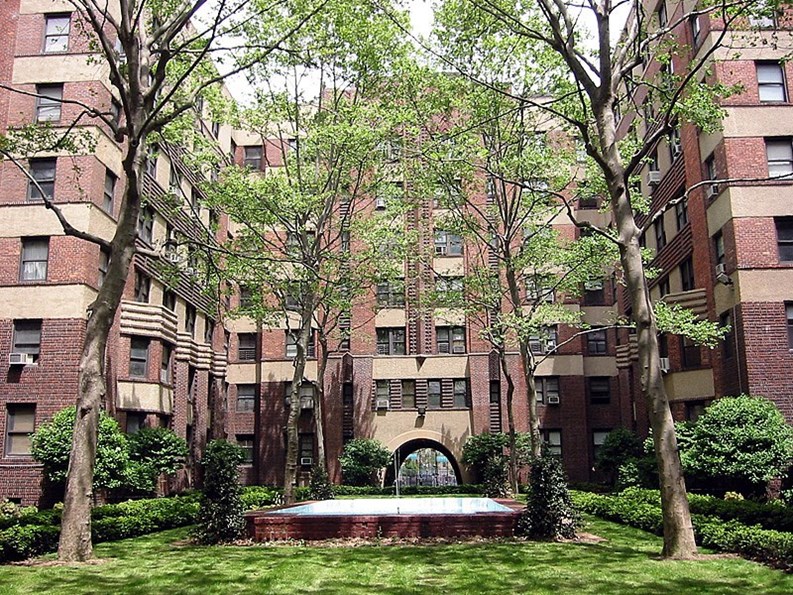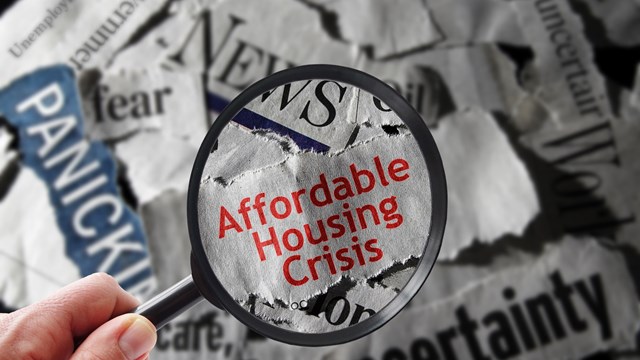Most of the multifamily, residential buildings found in large cities are either co-ops or condos, and most are run the way co-ops and condos across the country are run. But if you dig a little deeper in here in New York City, you’ll find that there are a variety of multifamily housing models. Some of these buildings are government-subsidized, some are are combinations of traditional co-op and condo units, and most are limited equity to preserve lower-cost housing stock. Nearly all of them have been developed to help residents find a way into vested ownership that better fits their financial picture.
Different Models, Similar Goals
These alternative buildings have different systems of organization and management, and face unique challenges, though their purpose is essentially the same. The three most common types are:
Mitchell-Lama buildings: Signed into law by New York State Senator MacNeil Mitchell, (R-Manhattan) and Brooklyn Assemblyman Alfred Lama in 1955 as The Limited-Profit Housing Companies Act, the Mitchell-Lama program provides affordable rental and cooperative housing to moderate- and middle-income families. In New York City, there are 97 city-sponsored moderate- and middle-income rental and limited-equity cooperative developments, totaling over 44,500 units in all.
HDFC co-ops: Housing Development Fund Companies are limited equity co-ops, incorporated under Article XI of the New York State Private Housing Finance Law, which allows the city to sell buildings directly to tenant or community groups, thus keeping the cost down. Many HDFCs were created through the co-op conversion of a foreclosed, city-owned property. As of 2008, over 1,000 HDFC cooperatives have been developed in the city.
TIL Buildings: One of the largest housing related contracts in the city is the Tenant Interim Lease program (TIL), which assists organized tenant associations in city-owned buildings to turning their buildings into co-ops where units sell for approximately $250 a unit. Run by the Urban Homesteading Assistance Board (UHAB), the TIL program has so far converted more than 1,700 buildings.
According to spokesperson Dana Variano, the UHAB is a non-profit organization that takes troubled apartment buildings—some of them owned by the city—and converts them into what are called "shared-equity cooperatives” partially owned by the tenants. Variano says that the people living in these buildings may get a much-needed financial break, but their responsibilities to their fellow residents largely remain the same.
“Residents in shared equity co-ops have very similar responsibilities to residents in traditional co-ops,” Variano says. “They must pay maintenance fees, vote in yearly elections, and follow the building's bylaws,” she says. Variano also notes that differences occur when it comes to the tenants’ rights and ownership.
“A key difference in resident rights comes when a shareholder looks to leave their co-op,” says Variano. “In a limited equity co-op, there is usually a waiting list of applicants, and the seller does not necessarily have a choice of who the buyer is. In addition, the unit's shares can be sold only to another low- or moderate-income family. Therefore, there is a cap on how much the shares can be sold for, reducing a seller's potential equity.” Variano adds that this limited-equity system “maintains the unit as an affordable housing option in perpetuity.”
Conducting Board Business
Just because a building is shared-equity doesn’t mean it doesn’t need a board, of course—and most of them function like any other, at least in terms of elections.
As in any cooperative building, “Mitchell-Lama boards of directors are elected by a majority of the shareholders at an annual meeting,” says Eric Bederman, a spokesperson for
New York City’s Department of Housing Preservation and Development (HPD). “Generally the terms are staggered so that only a portion of the board is up for election in any given year. At the annual meeting [in a TIL building], eligible shareholders have an equal vote in the election of a board.”
The boards of the buildings may not be able to make huge changes to the buildings in which they live—which some see as a major problem with these kinds of buildings—but they do act as the voice of the tenants and help communicate with city officials as needed. Since the city usually owns at least a part of the building, too, it’s important to have a group willing and able to take on the responsibility.
“Interactions with city officials vary, depending on what program the building is enrolled in,” says Variano. “The most highly regulated shared equity co-ops are Mitchell-Lama buildings. In these buildings, you need city approval to change charges or enter into monetary contracts over $20,000, for example.”
Serving on a board for a large building, even when some of the decisions are already made, is not always easy for people who may not have business experience. “People in lower-income buildings aren’t always used to dealing with large sums of money and they’re thrust into a position where they’re essentially managing a large corporation,” says Martin Kera, an attorney with Manhattan-based Kera & Graubard, and a principal of Bren Management Corp. “Sometimes the people in higher-income buildings don’t know how it works, either, but you're more likely to have business owners and so forth who may be able to make more informed decisions.”
Kera says that on any board, board members will make good and not-so-good decisions regardless of socio-economics. “Some boards will blow all their money on an entryway and then can’t afford to fix the roof,” he says. “But on a board of five to seven people, it’s typical that one or two will have a strong understanding of money.”
Bederman says the interaction between board members, city officials and the departments that oversee them “depends on the form of regulatory agreement that the city has with the building. Often, buildings approach HPD for renovation loans and technical assistance.”
Variano adds that for the most part, “The challenges that face limited-equity co-ops are more similar to traditional co-ops than they are different. They deal with budgets, capital improvements, running the building, and collecting maintenance fees. There is a large focus on genuine, grass-roots level democratic government inside the buildings and among the boards. Shareholder participation is key to building community and keeping the building running well.” Many UHAB buildings and TIL buildings require their tenants to go to training sessions, seminars, and classes on building management.
Make It Work
Not just anyone can get into these buildings—which of course is another way they’re just like the “regular” co-ops and condos in the city. “There are usually waiting lists involved,” says Variano. “There are income restrictions, and those who wish to buy must live in the co-op as their primary place of residence.” No cozy pied-a-terres, in other words. Waiting lists can be long, depending on a host of factors that include the economy, population, season, and budget constraints on the city. These factors all limit the number of units available at any given time. Luckily, the programs that developed these kinds of buildings also developed ways to help people get into them.
“The HPD has specific functions, such as setting the rents and approving contracts above certain threshold amounts,” says Bederman. “In addition, HPD provides technical assistance with regard to fiscal issues and to the physical needs of a development. HPD and the New York City Housing Development Corporation (HDC) also provide low cost loans to Mitchell-Lama developments that are not available in the private loan market. That helps keep operating costs low and enables the building to undertake needed capital repairs.”
Still, apartments in these buildings aren’t easy to score. “The city subsidized mortgages that enabled them to charge lower rents,” says Kera. “Some were co-op, some were rentals. Mitchell-Lama buildings can’t be built now. A lot of them have phased out of Mitchell-Lama, though there are still buildings that are still around. But the owner can decide to take them out of that system.” When that happens, of course, fewer units are available and the pool shrinks.
It’s another example of the somewhat limited scope of options in these alternative kinds of buildings. Indeed, limited-equity structures have their detractors. When a co-op unit is purchased through a program like TIL for example, it’s only partially owned by the tenant, which means that, as Variano indicates, there’s a limit on how much is earned by the seller when the unit is put on the market.
The “R” Word
So how is the recession affecting shared-equity buildings? Surprisingly, they’re not doing too badly so far.
“Interestingly enough, the recession has not had a very large effect on limited equity buildings,” Variano says. “Since the buildings exist somewhat outside of the market, turnover tends to be very low in both good times and bad. To the best of our knowledge, there hasn't been a single foreclosure in a New York City shared equity co-op.”
On the flip side, the recession has meant a slowing of development of new shared equity co-ops. This is because the recession has affected non-profit organizations and non-market developers that work with these buildings, and it has been harder and harder to get credit and raise operating funds and capital.
Bederman agrees. “The drop in real estate value has slowed the drive to take properties out of the Mitchell-Lama program, and into the private market, at the end of their regulatory agreements. HPD and HDC’s low-cost financing is an attractive option for property owners with mounting financial and capital demands. Owners are proving increasingly receptive to extending their terms of affordability in exchange for partnering with the city to refinance and preserve their buildings. In essence, the silver lining in this recession is that we have been able to keep more Mitchell-Lama properties in the program—preserving this valuable affordable housing for the next generation. During the Bloomberg Administration, we have preserved approximately 30,000 units of Mitchell-Lama housing. There are about 100,000 units remaining that have not been refinanced, and HPD now has a rare opportunity to address the rehabilitation needs of this aging housing stock and keep it in the program for the long term.”
Mary Fons is a freelance writer living in Chicago and a frequent contributor to The Cooperator.










Leave a Comment